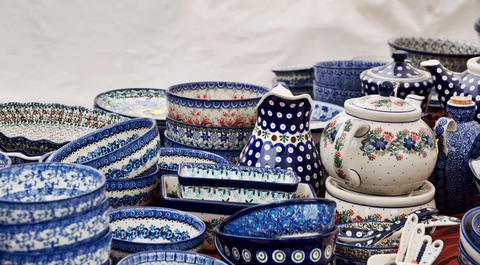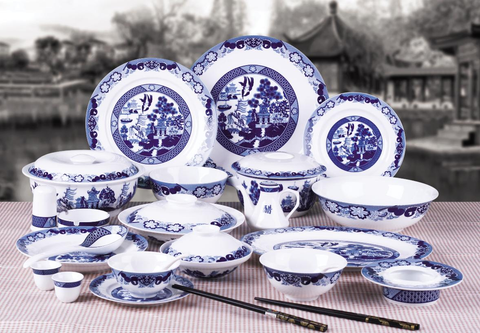What is Porcelain?
Porcelain is a type of ceramic that is known for its durability, translucency, and beautiful finish. It is often used for both practical items, like dishes, and decorative objects, such as figurines. Understanding what porcelain is and its various applications is crucial for appreciating its place in both art and daily life.
Definition and Characteristics
Porcelain is made from a mixture of kaolin clay, feldspar, and quartz, fired at high temperatures to achieve its characteristic hardness and translucency. This combination results in a strong yet delicate material that can be both functional and decorative.
Distinction Between Porcelain and Other Ceramics
While porcelain is a type of ceramic, not all ceramics are porcelain. The primary difference lies in the firing temperature and the materials used, which give porcelain its unique properties.

Historical Development of Porcelain
Origins in China
Porcelain has its roots in China, dating back to the Han Dynasty (206 BC – 220 AD). However, it wasn’t until the Tang Dynasty (618–907 AD) that porcelain began to take its recognizable form. Early pieces were often unglazed and coarser than modern porcelain.
Key Dynasties: Tang, Song, Ming, and Qing
Each dynasty contributed to the evolution of porcelain:
- The Tang Dynasty saw the introduction of celadon and the first true porcelain.
- The Song Dynasty refined glazing techniques, creating exquisite wares.
- The Ming Dynasty popularized blue-and-white porcelain, which became a hallmark of Chinese art.
- The Qing Dynasty expanded the variety and intricacy of designs.
Functional Purposes of Porcelain
Everyday Use: Tableware and Utensils
Porcelain has long been favored for tableware due to its durability and elegance. Its non-porous surface makes it easy to clean, making it ideal for everyday dining.
Decorative Arts: Vases and Figurines
Beyond functionality, porcelain has also been used for decorative arts. Vases and figurines showcase artistic skill and cultural themes, often becoming treasured collector’s items.
Cultural Significance: Rituals and Ceremonies
Porcelain holds cultural significance in many societies, particularly in China. It is often used in rituals and ceremonies, symbolizing purity and refinement.

The Role of Jingdezhen in Porcelain History
The Birthplace of Fine Porcelain
Jingdezhen, known as the “Porcelain Capital,” has been producing high-quality porcelain for over a thousand years. Its location and resources made it a prime center for porcelain production.
Unique Techniques and Innovations
Artisans in Jingdezhen developed unique techniques, such as underglaze painting and intricate molding, which set their porcelain apart. These innovations have contributed significantly to porcelain's history.
Evolution of Porcelain Designs
Influences from Other Cultures
Over the centuries, porcelain designs have been influenced by interactions with other cultures. The Silk Road played a significant role in the exchange of ideas and styles.
Modern Adaptations and Contemporary Art
Today, porcelain continues to evolve. Artists are experimenting with new forms and techniques, bridging traditional craftsmanship with modern aesthetics.
Caring for Porcelain Products
Maintenance and Cleaning Tips
To ensure the longevity of porcelain items, it's essential to handle them with care. Avoid using abrasive cleaners, and opt for mild soap and warm water for cleaning.
Displaying Porcelain Safely
When displaying porcelain, ensure it is in a stable location, away from direct sunlight and extreme temperatures. Consider using display cases to protect delicate pieces.
Conclusion
The history and purpose of porcelain reflect its enduring appeal and significance. From its origins in China to its cultural impact worldwide, porcelain remains a vital part of both art and everyday life. Explore the beauty of Jingdezhen porcelain and consider adding a piece to your collection!
FAQs About Porcelain History and Purpose
What are the primary materials used in porcelain? Porcelain is primarily made from kaolin clay, feldspar, and quartz.
How has porcelain influenced global art? Porcelain has impacted artistic practices worldwide, inspiring artists to adopt and adapt its techniques and styles.
Why is Jingdezhen porcelain highly valued? Jingdezhen porcelain is prized for its craftsmanship, unique designs, and historical significance.
What types of porcelain are most commonly used today? Common types include bone china, fine china, and stoneware, each with specific properties and uses.
Can porcelain be safely used in the microwave? Yes, most porcelain is microwave-safe, but it’s essential to check for any metallic decorations that may not be safe.



